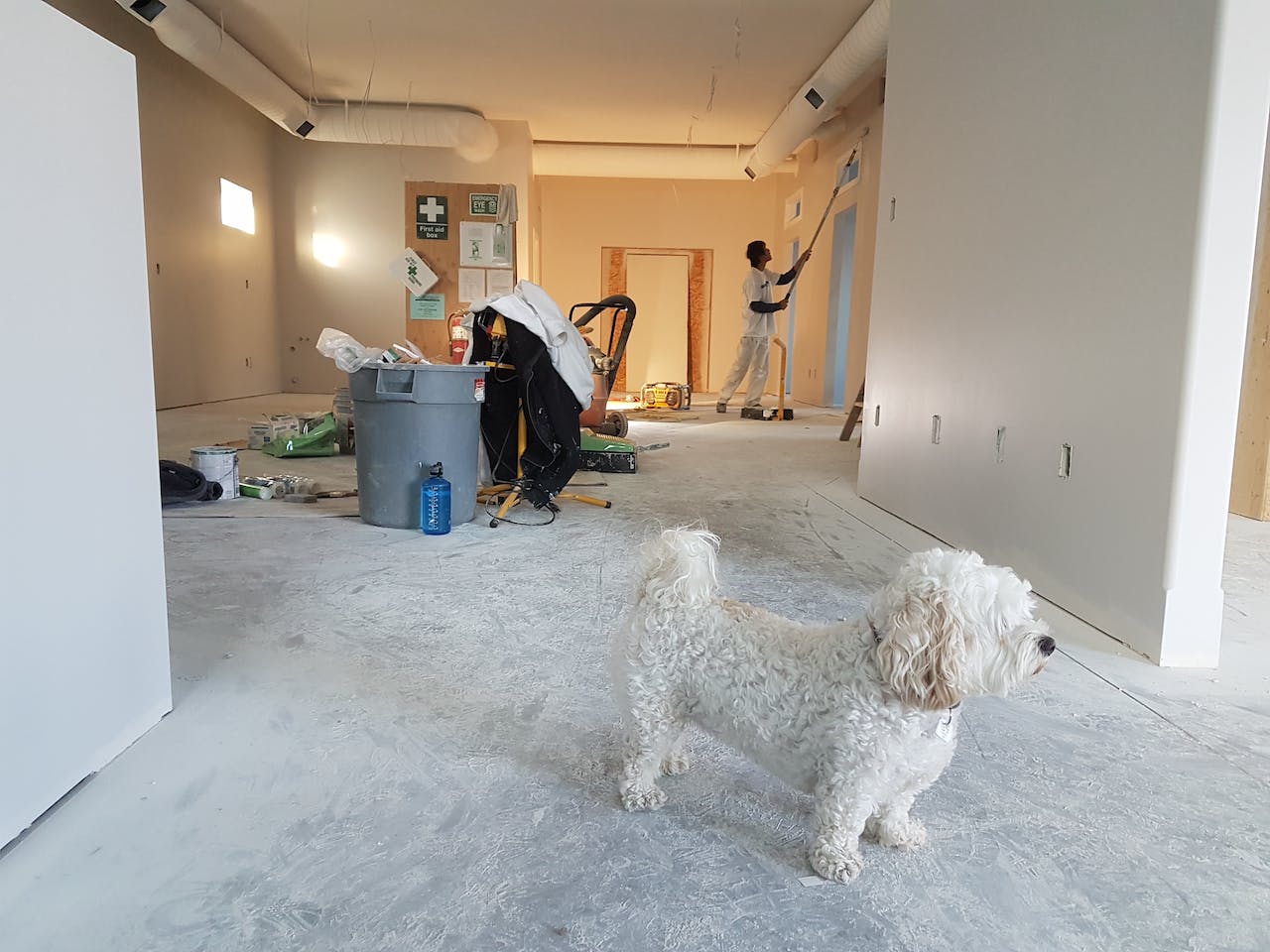Revamping a dim basement isn’t always at the top of the to-do list, especially when there are more pressing home remodeling issues like fixing a leaky roof or upgrading windows.
But having a basement opens up a potential goldmine of unused space. Why let it go to waste when it could transform into a home office, an additional bedroom, or a fitness haven? After all, having extra space is important for work, school, or just unwinding.
If you’re thinking of undergoing basement remodeling in Falls Church, VA, here are some essential tips to keep in mind.
1. Check for Moisture First
The first step in the remodeling process is ensuring your basement is dry and mold-free. Basements, with their low temperature, limited light, and proximity to pipes, are notorious for harboring moisture. Excessive moisture might disqualify your basement for finishing. Effectively managing moisture opens the door to a variety of possibilities for your basement.
The source of moisture problems may range from landscaping issues to foundation leaks. Even if your basement lacks a musty smell, checking for mold is essential due to potential health hazards. You can test moisture levels using the following steps:
- Create a square on the wall with duct tape strips.
- Wait for a full twenty-four hours.
- Check if the tape has become damp or rolled off.
Dry tape indicates no replacement is needed, but damp or wet tape signals the need for wall replacement.
Addressing minor moisture concerns is feasible with water-lock paint, while cracks can be sealed using specialized caulking.
Dehumidifiers play a crucial role by extracting moisture from the air, preventing it from condensing on basement walls and ceilings.
In regions where basements are commonplace like in Virginia, you’ll find professionals capable of handling these moisture issues. Even if your basement experiences a slight water flow that drains away, specialized basement substrates can be used to elevate the flooring. Keep in mind that waterproofing is an ongoing process integrated into various basement renovation stages.
2. Know What You Want to Do With Your Basement
Basements boast unique characteristics that might not suit every purpose. Typically, they’re chilly, dim, and somewhat secluded.
Creating a sunny family room might be a challenge due to the difficulty of incorporating ample windows or sun tubes for someone who loves sunlight.
However, basements can excel in other areas that don’t demand much light. Home theaters, for instance, thrive in low-light environments with controlled acoustics.
For workout areas like home gyms or yoga spaces, basements can be a great fit. Just keep in mind that the lower ceiling might limit the installation of tall exercise equipment.
3. Create a Basement Plan
Now that you know what you’re going to convert your Falls Church basement into, you can enter the planning phase of your full-scale basement remodel. This is where you figure out what you want to achieve with your project with the help of top basement remodeling contractors.
Did moisture pop up in the initial steps? Are you thinking about knocking down walls or adding a bathroom? Your decisions in these areas will shape the project.
Budget is a key factor, too. Your financial scope influences what you can accomplish, and you might need professional help for certain tasks. Sort out your design and layout during this phase.
It’s also important to check building codes and secure the necessary permits for basement remodel in Falls Church, VA. Each municipality has its own requirements, and compliance depends on your specific plans.
4. Make Some Space
Unless you’re starting with a completely bare canvas, like a new home or an empty, unfinished basement, it’s time for some cleanup. Contractors can’t work magic amid the chaos, so a basement space clean out is a must.
Everything currently stored in the basement needs a temporary home, be it a spare room, a storage pod, or an off-site facility. This process not only clears the way for your project but also gives you a real sense of the available space.
Gather your household troops and start hauling everything out—boxes, furniture, appliances, trash, the works. The last thing you need is to navigate around unnecessary stuff while transforming your basement.
Arrange for a construction debris bin from your local sanitation department to toss out things beyond saving.
5. Develop Your Plumbing, Electrical, and Insulation Plan
The basement plan, especially if it includes bathroom remodeling, demands the same electrical necessities as any upper floor. That means thinking about lighting circuits, outlets, and specific installations like a bathroom exhaust fan, all meeting the electrical code.
It’s best to tackle plumbing and electrical work while the walls are down—it’s more doable and less hassle.
Some basements handle temperature swings naturally, staying cool during the summer and warm in winter due to their below-ground position. Yet, for most homes, an extra heating and cooling plan is a must.
Electrical baseboard heaters offer quick warmth, while connecting to existing HVAC ductwork from upper floors can be a smart move for your basement’s climate.
6. Don’t Forget Paint, Fixtures, and Lighting
Basements often suffer from a lack of natural light, but that’s where a clever lighting plan can save the day. Given the absence of natural light, artificial lighting takes center stage.
Don’t skimp on it—plan for more lights than you think you’ll need. You can always adjust as needed, but having too little light is a bigger hassle.
As for adding the finishing touches, the order depends on your project scope. Some prefer to paint first, while others leave it for later. Whether it’s installing a sink, cabinets, a shower, or a kitchenette, the key is progress.
7. Have Your New Basement Inspected
Before you kick back and revel in your finished basement, it’s essential to ensure that your efforts meet safety and efficacy standards in Falls Church, VA.
Refer to the permits you obtained earlier—they’ll guide you on the inspection process, usually involving a visit from a city inspector.

